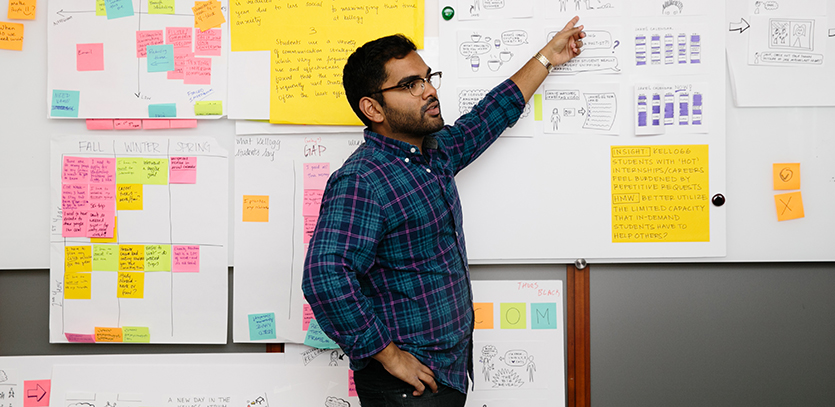Applying Design in the Management Consulting Space
A MMM Student Leverages Design Thinking for Change Management
Anil Divakaran is a current student in the MMM Program.
Most, if not all, MMMs spend their second summer in the program as an intern, getting the chance to put the skills they’ve been learning to work for a company. For my summer internship in the MMM Program, I took a role as a Summer Associate at Bain & Company in New York. Management consulting isn’t typically thought of as a design-oriented industry; though many of my peers interned as product managers or business designers, I took a more “typical” MBA route. However, I found myself employing the skills I’ve learned in the MMM Program very soon after arriving at Bain.
I was staffed on a client undergoing transformational change at the corporate level, helping them to implement these changes at the field level (within individual retail locations). Most of my work was analytical, focusing on building tools and models to help execute changes and ultimately measuring the impact of these changes. Once an initiative was launched in a new location, we would measure key performance indicators (KPIs) to gauge how successful the unit was performing in this new environment. If the KPIs were lagging, we would intervene to help the unit get back on track.
Interestingly, there was a very human element to this workstream. It turns out, major business change typically also requires major cultural change. Even with all the right tools and literature in place, change only succeeds when people are prepared and motivated to act. This is where my MMM skillset really came into play; I had to understand what managers and directors were going through and determine what the keys for success would be from an employee perspective. Similar to a user of an app or product, the "user" for the changes we were implementing was not only the end consumer, but also the employees being asked to change the way they had been doing their jobs for, in some cases, decades.
My approach was to first learn as much as possible about the human experience associated with these changes. I spoke extensively with actual location managers and regional directors for the client, learning what they felt were the most challenging parts of the change and what kinds of skills, approaches, or techniques were most beneficial in finding success. I also spoke with experts in the retail space, including former C-suite executives, learning from them what they had seen on a broader scale and how they were able to learn from successes (and failures) in implementing major change. Interviews were essential in informing my approach; speaking to real people with real experiences was far more valuable than positing hypotheses or doing secondary research. Empathy with the end user was at the core of my work, and I had a year of experience in the MMM Program guiding me along the way.
Looking back at the end of my summer, I realized I used the two key pieces of my education on the job in helping my client succeed: strong analytical business skills and deep human-centered design thinking.

